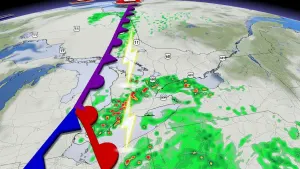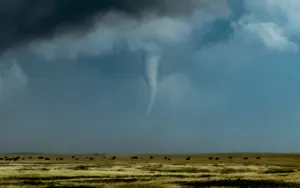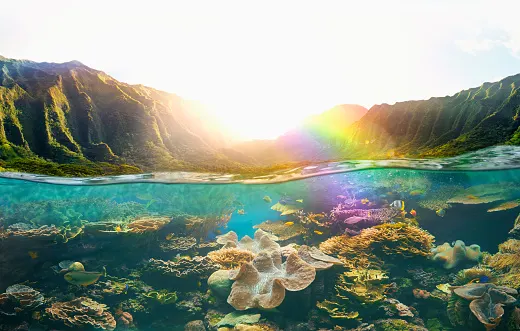
Study: Climate change is driving coral reefs to cooler waters
These new coral blooming regions also mean an increase in biodiversity, making them a potentially desirable destination for scuba diving enthusiasts and sustainable fishing.
Earth’s oceans have shown signs of substantial warming over the past few decades, and a direct consequence of such warming in tropical regions has been coral bleaching.
Scientists call these extreme ocean water temperature events “marine or ocean heatwaves”. As they become more frequent, prolonged, and intense with time, they're having a greater and greater impact on coral reef populations.
Despite widespread climate-driven reductions of coral cover on tropical reefs, recent observations and research conducted by scientists from six countries (led by Nichole Price from the Bigelow Laboratory for Ocean Sciences in Maine, USA) show that some corals are migrating to cooler subtropical seas. This new ecological regeneration of reef-building coral may become the norm in the future as oceans warm in subtropical latitudes, creating a friendly environment for younger corals that have a greater mobility capacity.
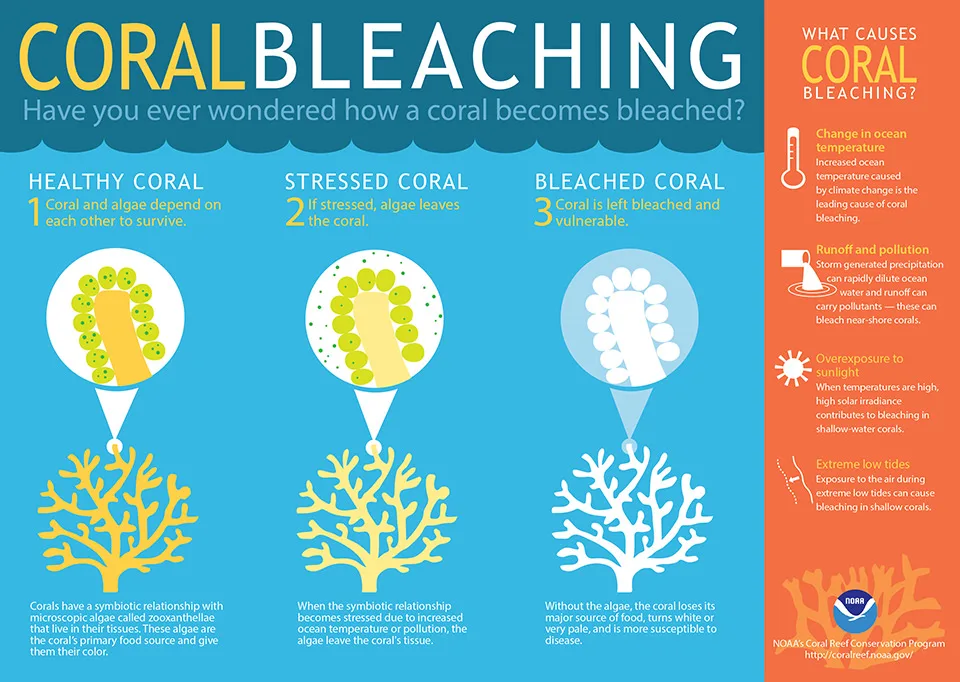
(Source: NOAA)
Results from this study show a decline in coral recruitment on a global scale. Values are down 82% from 1974 to 2012. Throughout the tropics, an 85% reduction has been measured between 20 degrees north and 20 degrees south latitude. However, changes in the sub-tropics stand out, with a 78% increase at latitudes greater than 20 degrees. These trends indicate that a global decline in coral recruitment has occurred since 1974, and the persistent reduction in the densities of recruits in equatorial latitudes, coupled with increased densities in sub-tropical latitudes, suggests that coral recruitment may be shifting poleward.
Seeing coral reefs expanding their domain north and south away from the tropics is certainly good news. However, Dr. Price cautions that this new scenario is not one that compensates the dramatic tropical decline of coral. There are many more corals lost across equatorial regions every year than growing in subtropical ones.
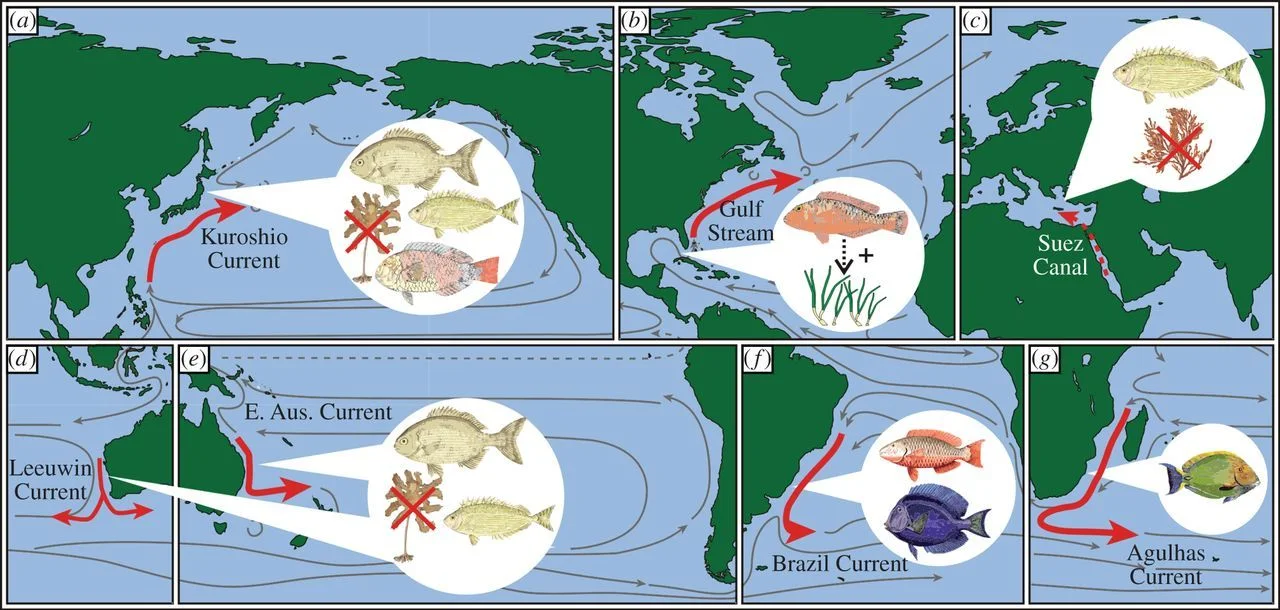
(Graphic: World map showing schematic of large-scale circulation, shifts in herbivorous fishes and ecological impacts in broad regions where emerging signs of the tropicalization of temperate marine communities have been recorded. Source: The Royal Society)
These new coral blooming regions also mean an increase in biodiversity, making them a potentially desirable destination for scuba diving enthusiasts and sustainable fishing.
The waters of the warm Gulf Stream and Kuroshio currents are definitely ideal playgrounds for new coral reef blooms. Among some of the locations seeing a rapid increase in coral populations is southern Japan’s Tatsukushi Bay, located around 33 degrees north.
In the United States, staghorn and elkhorn corals are also extending their territory northward along the Atlantic coast of Florida. Elkhorn coral reefs have also appeared in the northern Gulf of Mexico coast of Texas for the first time since observations exist.
Australia, home to some of the largest coral reefs in the world, is also experiencing clear signs of coral reef migration, from the Great Barrier Reef south to the coast of New South Wales near Sydney.
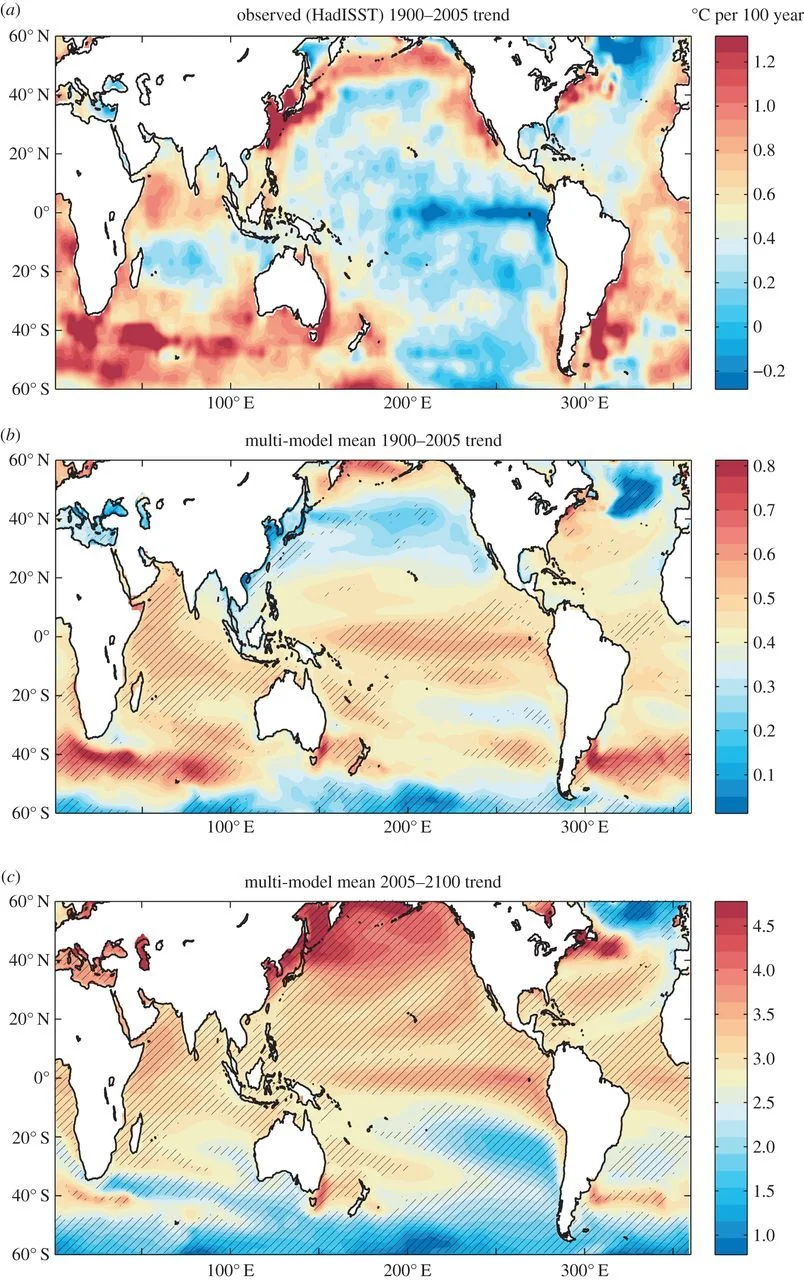
(Graphic: Trends in global sea surface temperatures (SST). (a) 1900–2005 trend in observed (HadISST) SST, (b) multi-model mean SST trend for the same period based on 34 CMIP5 models, (c) multi-model mean SST trend for 2005–2100. Source: The Royal Society)
It’s not the first time in history that coral reefs venture outside of tropical regions. Back in the Holocene, about 6,000 years ago, a warmer Earth with sea surface temperatures almost 2°C warmer than in recent years, saw coral reefs extending much further poleward than today.
So the tropicalization of ocean ecosystems is not something new, and as the ocean warms we will likely see this process extend from the tropics into subtropical regions, bringing not only more coral reefs, but also all the biodiversity that comes along to these hotspots.









